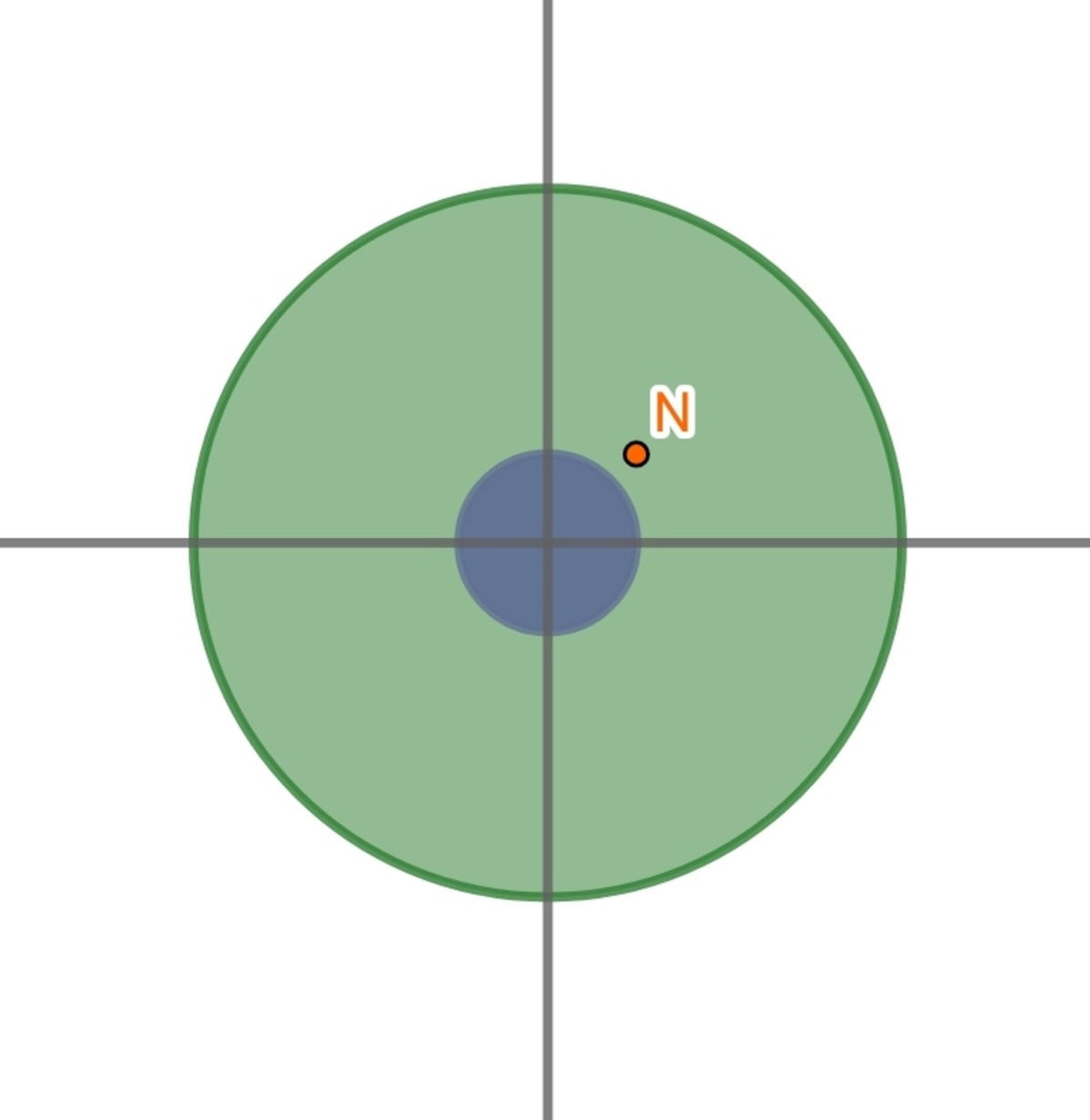Gauss's Law Exercise (part 5)
A particle with charge
q
=
+
1
0
is position at
N
(
x
,
y
,
z
)
=
(
1
,
1
,
1
)
at that orange dot as shown in figure. A closed conical frustum consists of a bottom surface, a top surface and curved surface. (Green)Bottom surface has equation
x
2
+
y
2
≤
1
6
centered at orgin and parallel to
X
−
Y
plane. The(Blue) top surface has equation
x
2
+
y
2
≤
1
centered at
(
0
,
0
,
4
)
and parallel to
X
−
Y
plane. And the third surface is curved surface. I have provided the view of figure from
+
Z
direction.
 Let the flux passing through these 3 surfaces be
ϕ
1
,
ϕ
2
,
ϕ
3
.
Determine the following ratio :
ϕ
1
+
ϕ
2
+
ϕ
3
ϕ
1
ϕ
2
ϕ
3
Details and Assumptions
1) Electric permittivity
ϵ
o
=
1
Let the flux passing through these 3 surfaces be
ϕ
1
,
ϕ
2
,
ϕ
3
.
Determine the following ratio :
ϕ
1
+
ϕ
2
+
ϕ
3
ϕ
1
ϕ
2
ϕ
3
Details and Assumptions
1) Electric permittivity
ϵ
o
=
1
The answer is 0.445.
This section requires Javascript.
You are seeing this because something didn't load right. We suggest you, (a) try
refreshing the page, (b) enabling javascript if it is disabled on your browser and,
finally, (c)
loading the
non-javascript version of this page
. We're sorry about the hassle.
1 solution
@Steven Chase Sir Ha Ha Ha Yes i agree with you i do not know how to calculate flux analytically through that curved surface. I just calculate through two disc and subtract it from 1 0 .
Log in to reply
@Steven Chase in your code what does N = 5 0 0 0 mean??
Log in to reply
For example, the disk has a radial dimension and an angular dimension. Each one of those is divided into 5 0 0 0 parts. So each surface ends up being divided into 2 5 million pieces. I always check the result for multiple different resolutions (N values), to be sure that the answer converges nicely as N increases.
Log in to reply
@Steven Chase – Today I started to learn code . Therefore I was asking . Simply you are doing integration . How much time does it take for you to run the code???
Log in to reply
@A Former Brilliant Member – That's good. You'll find it very useful. This code will take anywhere from a few seconds to a minute or two to run
Log in to reply
@Steven Chase – @Steven Chase is there any website or any YouTube channel where phython programming is well explained??
Nice problem. Solution code is attached. The key here is that we only need to explicitly calculate the fluxes for the two disks. Then we can use Gauss's Law to get the flux for the curved surface.